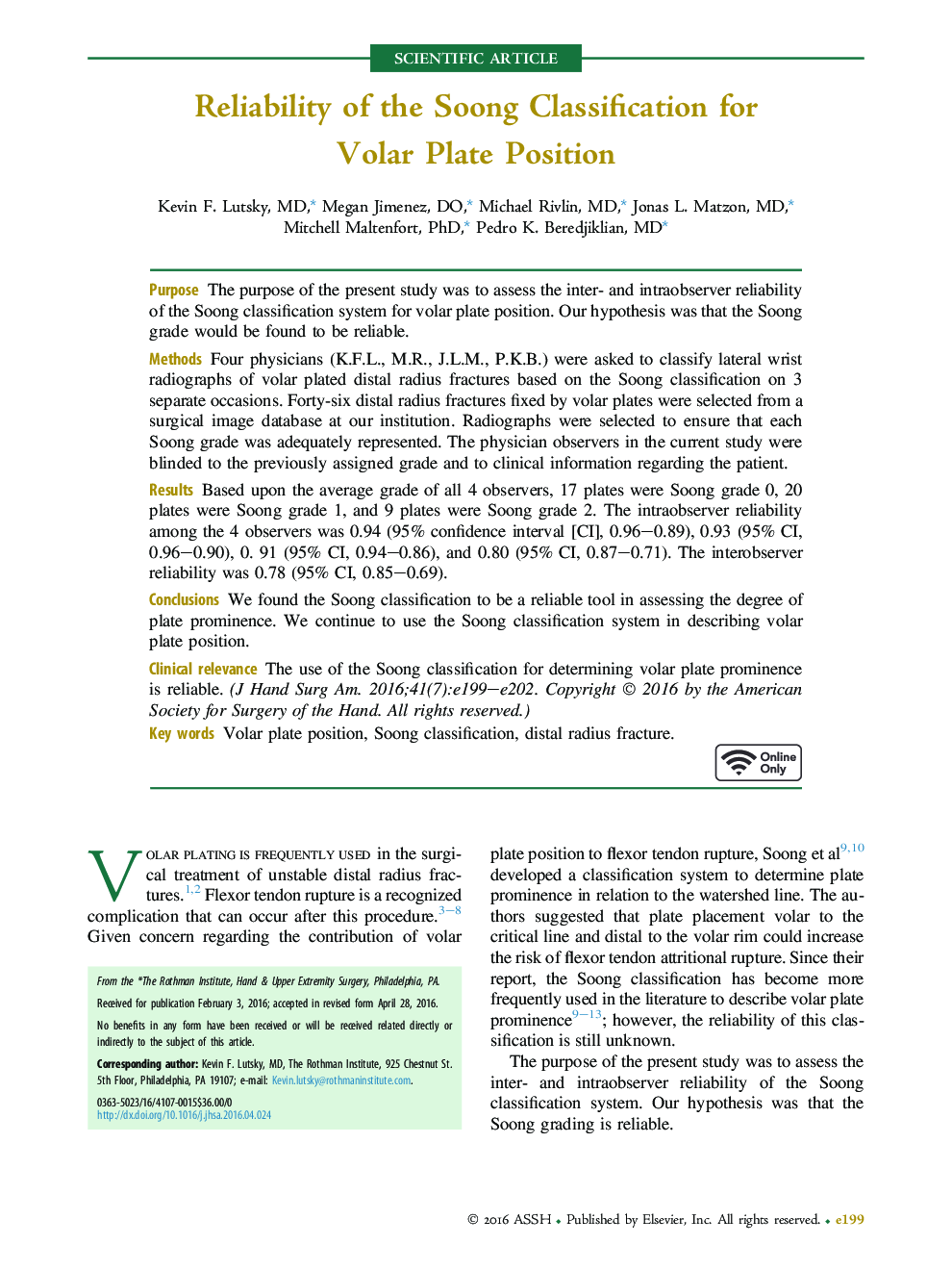| کد مقاله | کد نشریه | سال انتشار | مقاله انگلیسی | نسخه تمام متن |
|---|---|---|---|---|
| 4066044 | 1604342 | 2016 | 4 صفحه PDF | دانلود رایگان |

PurposeThe purpose of the present study was to assess the inter- and intraobserver reliability of the Soong classification system for volar plate position. Our hypothesis was that the Soong grade would be found to be reliable.MethodsFour physicians (K.F.L., M.R., J.L.M., P.K.B.) were asked to classify lateral wrist radiographs of volar plated distal radius fractures based on the Soong classification on 3 separate occasions. Forty-six distal radius fractures fixed by volar plates were selected from a surgical image database at our institution. Radiographs were selected to ensure that each Soong grade was adequately represented. The physician observers in the current study were blinded to the previously assigned grade and to clinical information regarding the patient.ResultsBased upon the average grade of all 4 observers, 17 plates were Soong grade 0, 20 plates were Soong grade 1, and 9 plates were Soong grade 2. The intraobserver reliability among the 4 observers was 0.94 (95% confidence interval [CI], 0.96–0.89), 0.93 (95% CI, 0.96–0.90), 0. 91 (95% CI, 0.94–0.86), and 0.80 (95% CI, 0.87–0.71). The interobserver reliability was 0.78 (95% CI, 0.85–0.69).ConclusionsWe found the Soong classification to be a reliable tool in assessing the degree of plate prominence. We continue to use the Soong classification system in describing volar plate position.Clinical relevanceThe use of the Soong classification for determining volar plate prominence is reliable.
Journal: The Journal of Hand Surgery - Volume 41, Issue 7, July 2016, Pages e199–e202